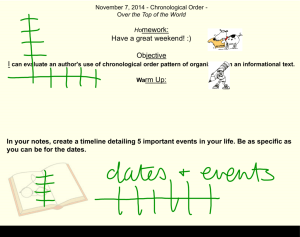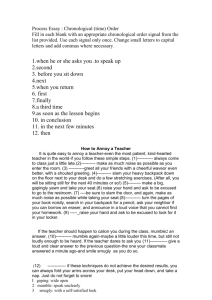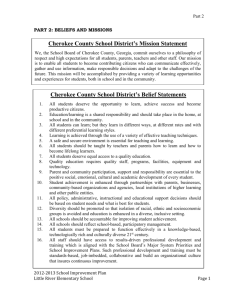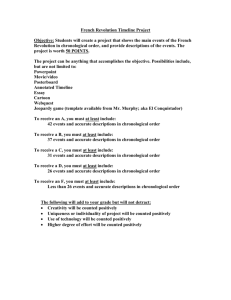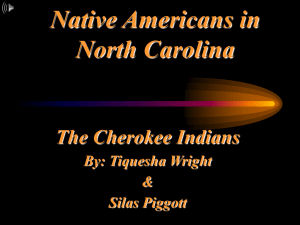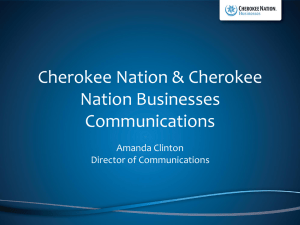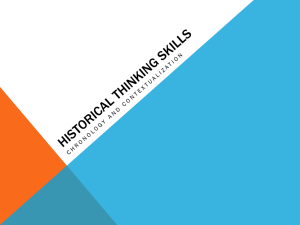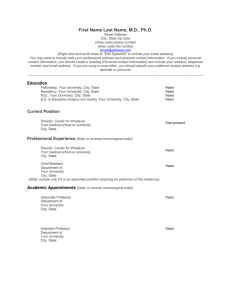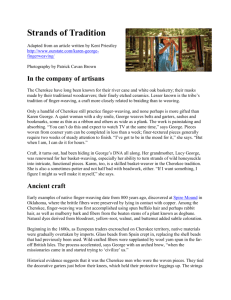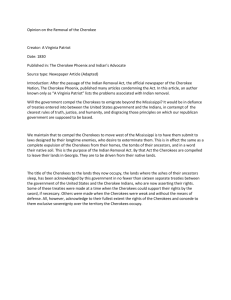One-Sentence Summary Frames
advertisement
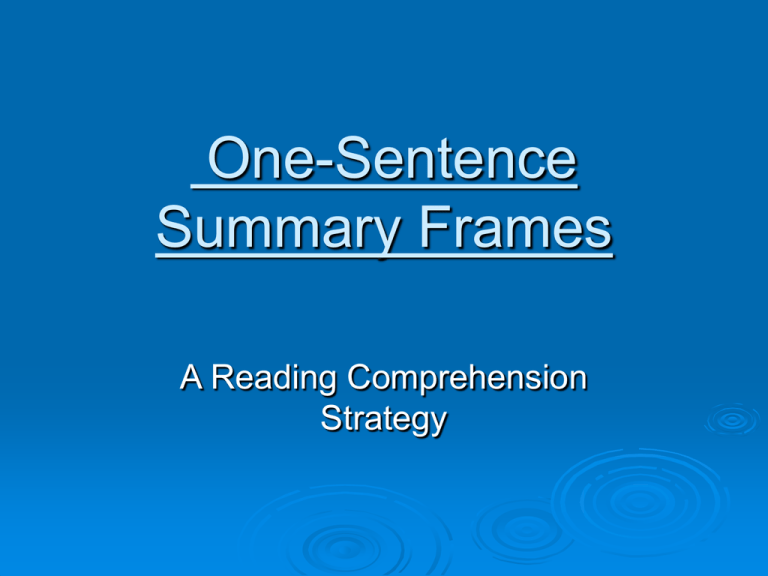
One-Sentence Summary Frames A Reading Comprehension Strategy Five Expository Text Patterns Chronological/sequence Description enumeration Compare/Contrast Cause/Effect Problem/Solution Chronological/ Sequence Frame ______ begins with …, continues with …, and ends with … Example: Success begins with attitude, continues with hard work and ends with positive outcome. Description/Definition Frame A __________________ is a kind of _______________ that … Example: A Daffodil is a kind of flower that blooms in the early Spring, grows from a perennial bulb, and gives off a sweet scent. Compare/Contrast Frame ___x____ and ____y___ are similar in that they both …, but ___x___ …, while ___y____ … Example: Chief John Ross and President Andrew Jackson are similar in that they both were leaders of a nation, but John Ross was forced to give up his nation’s land, while Jackson helped create a law that took that land. Cause/Effect Frame _________ happens because …. Example: During a thunderstorm Lightning happens because liquid and ice particles collide and build up an electrical field in the clouds. Problem/ Solution Frame _________ wanted …, but …., so … Example: Chief John Ross wanted sovereignty over Cherokee land, but the Indian Removal Act of 1830 allowed the U.S. to force the Cherokee to move, so the U.S. sent troops in 1838 removing the Cherokee to Oklahoma in what the Cherokee called “The Trail of Tears.” One Sentence Summary Frames Description Problem/Solution _____ begins with …, continues with …, and ends with … Comparison/Contrast _____ wanted …, but …, so … Sequence _____ is a kind of _____ that …. x and y are similar in that they are both …, but x …, while y … Cause/Effect _____ happens because … -or- _____ causes … Expository Text Patterns Chronological/sequence Description enumeration Compare/Contrast Cause/Effect Problem/Solution Chronological/Sequence Used to inform readers about a topic by presenting information though events or steps in a chronological order using time. Signal Words First, second next not long after Initially then before Following when finally Preceding after on (date) FRAME: ___x____ and ____y___ are similar in that they both …, but ___x___ …, while ___y____ … Description Used to describe the attributes and features of people, places, or items Signal Words For instance Such as Another FRAME: for example in addition furthermore also first to illustrate _____ is a kind of _____ that …. Compare/Contrast Used to illustrate the differences or similarities of the items being compared Signal Words Different/ from/same as/similar to/ As opposed to/instead of/although/ Compared with/however/as well as/ Either or/unless/but Frame: x and y are similar in that they are both …, but x …, while y … Cause/Effect Used to show how the facts, events, or concepts result due to other facts, events, or concepts Signal Words Consequently may be due to since This led to…so nevertheless if...then Accordingly because of yet As a result of in order to also For this reason not only…but because Frame: _____ happens because … or _____ causes …. Problem/Solution Used to present a problem and possible solution(s) to a problem Signal Words the problem is the question is a solution one answer is therefore if….then Frame: _____ wanted …, but …, so … One Sentence Summary Frames Description Problem/Solution _____ begins with …, continues with …, and ends with … Comparison/Contrast _____ wanted …, but …, so … Sequence _____ is a kind of _____ that …. x and y are similar in that they are both …, but x …, while y … Cause/Effect _____ happens because … or _____ causes Paragraph Frame ________ are different from _________in several ways. First of all, ________ while _________. Secondly, _____________ while ______. In addition, ___________ while ______. So, it is evident that _________________. Pre-Reading: PAS Preview Access Set the Text and Critical Vocabulary and build background Knowledge the Purpose Pre-reading Activities Preview the text Text structure Signal or transition words Pre-teach critical vocabulary Access and build prior knowledge Make connections Ask meaningful questions Set the purpose for reading Previewing (Survey) Examine headings and sub-headings Analyze the genre Examine bulleted lists Examine pictures, captions, charts, graphs, and illustrations Explicitly discuss expectations Text Structure •Boldface type (or italics, underline, ALL CAPITAL LETTERS) •Bulleted or numbered points •Headings
